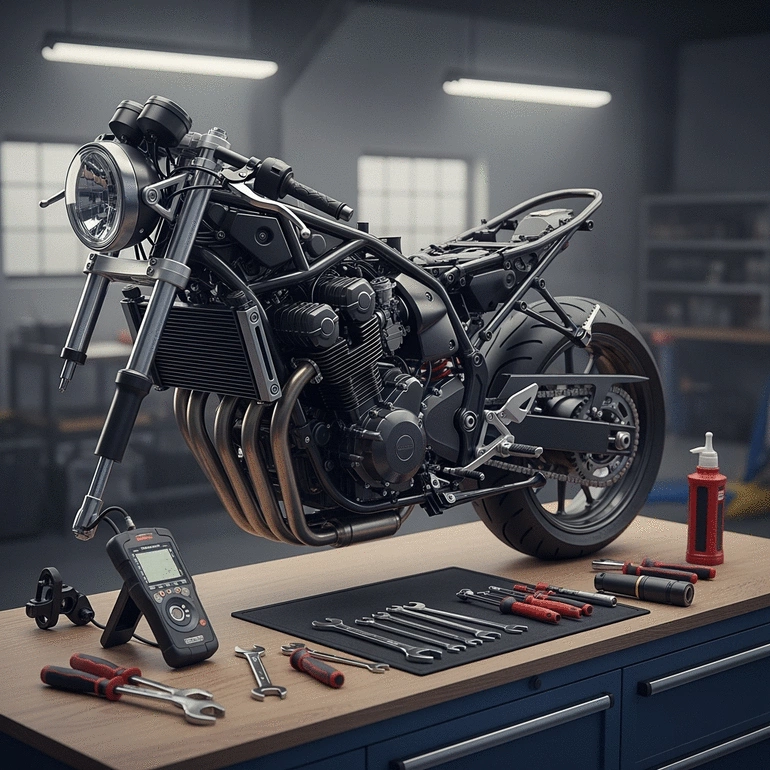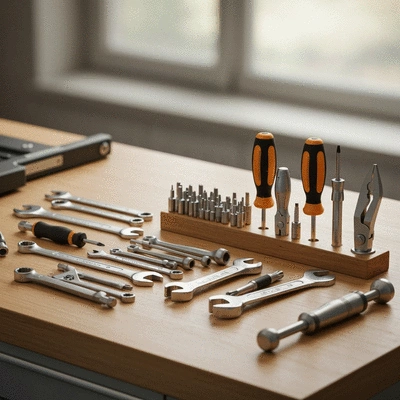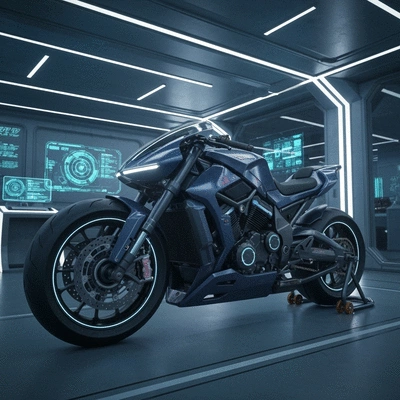1. Identify Common Issues
- Battery failures
- Brake issues
- Engine troubles
- Electrical faults

What if you could save both time and money by learning to diagnose and fix your motorcycle problems at home? This guide empowers you with the essential knowledge and tools to keep your bike in top shape.
This flow diagram outlines the process for diagnosing and fixing common motorcycle problems, from initial issue identification to resolution and ongoing learning. For more detailed insights into managing repair costs, you might find our article on motorcycle repair costs in Australia particularly helpful.
As a motorcycle enthusiast, I've often found that knowing how to diagnose and fix common issues can save both time and money. Understanding the typical motorcycle problems that riders encounter can significantly enhance your experience on the road.
Motorcycles, like any vehicle, can face a variety of problems. Some of the most common issues include:
Recognizing these problems early can help maintain your bike’s reliability and ensure a safe riding experience. Don't wait until something goes wrong—stay ahead by familiarizing yourself with these common issues.
Before diving into repairs, it's crucial to have the right tools on hand. Here’s a list of must-have tools for diagnosing motorcycle issues:
Having these tools will not only make troubleshooting easier but also help you complete repairs with confidence. And remember, investing in quality tools pays off in the long run. For a detailed guide on what tools you'll need, check out our article on selecting tools for DIY motorcycle repairs.

To effectively troubleshoot and repair your motorcycle, certain diagnostic tools can be invaluable. Here's a rundown of some tools that can assist in your repairs:
Utilizing these diagnostic tools can lead to quicker resolutions and a more thorough understanding of your motorcycle's health. Trust me, a little investment in the right tools goes a long way!
Before you start any repair work, safety should always be your top priority. Here are some key safety tips to follow:
By following these safety precautions, you can minimize risks and enjoy the process of working on your motorcycle. It’s all about feeling secure while you dive into those repairs!
Did you know? Regularly checking your motorcycle’s tire pressure can enhance fuel efficiency and improve handling. Make it a habit to inspect your tires before every ride to ensure optimal performance and safety on the road!
Common issues you can often tackle yourself include battery failures, minor brake adjustments, spark plug replacements, and diagnosing basic electrical faults with a multimeter.
A basic toolkit should include a socket set, various wrenches, a multimeter for electrical checks, a torque wrench for precise tightening, and essential safety gear like gloves and goggles.
While not strictly necessary for every repair, diagnostic tools like an OBD scanner (for modern bikes), compression tester, or vacuum gauge can significantly help in accurately identifying the root cause of more complex problems.
Always wear protective gear, work in a well-ventilated area, disconnect the battery when working on electrical systems, and keep a fire extinguisher nearby, especially when dealing with fuel.
Online motorcycle communities, forums, YouTube channels with step-by-step video tutorials, and dedicated motorcycle enthusiast blogs are excellent resources for learning and support.
Let’s take a moment to recap what we’ve covered! Diagnosing and fixing motorcycle problems at home is not just about saving money; it’s about empowering yourself as a rider. We’ve explored common issues, the essential tools you'll need, and the step-by-step techniques to tackle those pesky problems. Remember, being proactive with DIY motorcycle maintenance can greatly enhance your riding experience and ensure your bike is safe and performing at its best!
As you embark on your DIY journey, don’t underestimate the importance of self-diagnosis. Taking the time to understand your bike can lead to more informed decisions and ultimately save you from costly repairs down the line. So, whether it’s checking the battery or troubleshooting brake issues, these skills will serve you well as a responsible motorcycle owner.
Now, I want to encourage you to roll up your sleeves and dive into those repairs with confidence! I can tell you from personal experience that there’s nothing quite like the satisfaction of solving a problem on your own. Knowledge and hands-on experience are your best friends in this journey, so don’t be afraid to experiment with what you’ve learned.

I invite you to share your own troubleshooting experiences and tips in the comments section below. Let’s foster a community of motorcycle DIYers where we can learn from each other and support one another through the ups and downs of motorcycle ownership!
One of the best ways to gain insights and share knowledge is by engaging with online motorcycle communities. Participating in forums can help you connect with fellow riders who have faced similar challenges. Here are some benefits of joining these communities:
Remember, we’re all in this together! The support and camaraderie you can find in these spaces can be incredibly valuable.
Don’t forget about the power of visual learning through video tutorials! They’re a fantastic resource when it comes to understanding the ins and outs of motorcycle repairs. Here are a few recommendations for where to find helpful videos:
Utilizing these resources can make complex tasks feel more manageable and less intimidating. So get out there, start learning, and remember: every repair you tackle brings you one step closer to being a more skilled and confident rider! For more general tips on keeping your motorcycle in prime condition, explore our motorcycle repair tips for riders.
Here is a quick recap of the important points discussed in the article:
We're your national guide to trustworthy motorcycle mechanics, ensuring every ride is smooth and safe. From sportbikes to cruisers, we connect you with quality service across Australia.
